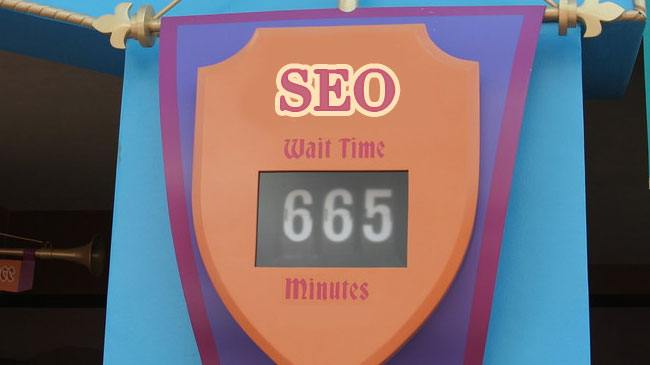How Does SEO Work?
Ah, SEO, that enigmatic, ever-changing acronym that’s become the holy grail of internet marketing. It can lead your company to the promised land – the first page of Google – but the map changes so quickly, you can feel like you’re going in circles. How does SEO work?

Every search has front-page results, so clearly some companies are getting it right. How are they doing it?
To answer that, we have to go back to the basics of SEO and what it is.
What Does SEO Mean? A Primer for Marketers
Let’s start at the very beginning.
SEO is an acronym for search engine optimization. It means designing and tweaking your site so that when people do a Google search for certain keywords, your site ranks among the first results.
It’s simple enough in concept, but the “how” is where it gets challenging. That’s because SEO depends on a knowledge of search engine algorithms, which are the processes by which those search engines decide what websites most deserve a reader’s attention.
Algorithms prioritize websites based on how well each site meets a list of criteria. Not all of the criteria are equally important, but they all factor into the end result.
Think of it like a balance scale, the kind with weights that tip it one way or the other. On one side, the search engine puts a website’s positive qualities, like:
- Valuable, original content
- Shares and backlinks
- Quick load times
- Readable formatting and structure
On the other side, you have the negatives. For example:
- Keyword stuffing (sticking in too many keywords in an attempt to fool the algorithm)
- Thin or unoriginal content
- Poor structure or formatting
- Confusing URLs
Each website has a balance scale. In the end, the ones that rank highest are the ones for which the “positives” end weighs the heaviest.
Which elements are the most important?
That’s the million-dollar question. And it never stays the same for long. Search engines are always adjusting their algorithms, as often as 600 times a year in Google’s case. Each update is meant to improve the accuracy and fairness of the results.

What’s Hot in 2019 (According to Google)
Google rolled out a major algorithm update in March of 2019. Like other recent updates, it focuses on the user experience and is particularly concerned with earning readers’ trust. Some of Google’s biggest priorities these days are:
HTTPS encryption
Google likes secure sites, and it’s decided that anything without HTTPS isn’t secure. The good news is that anyone can get HTTPS; all you need is a dedicated IP address and an SSL certificate. Then you need to update your site to reflect the HTTPS.
Trustworthy content, especially for health-related searches
Industry experts refer to certain keywords with the acronym “YMYL,” which stands for “Your money or your life.” This phrase refers to financial and healthcare websites, which were heavily impacted by Google’s E-A-T update, which rolled out in 2018. (Google loves acronyms.)
E-A-T stands for Expertise, Authority, and Trustworthiness. Google’s 2018 update brought those three factors to the top of its SEO priority list, particularly for websites that provide medical or financial advice.
Now more than ever before, Google is demanding that sites like these post content from credentialed experts. If a site can’t verify the background of its editorial writers, it won’t rank well.
Evidence of reader engagement
Google prioritizes sites that are useful to readers, but they can’t ask every user what he or she thinks of a site. Their solution is to evaluate visitor responses based on three measurable factors:
- Time spent on site
- Pages viewed per visit
- Bounce rate
The result is a higher ranking for sites that hold their readers’ interest. According to Google, engaged users will stay where they are and won’t feel the need to go back to the search engine results page (SERP).
Fast loading on mobile devices
Mobile queries now account for nearly 60 percent of all organic search visits, and Google is working to serve these mobile users by prioritizing sites that load fast on any device.
If you haven’t been focused on mobile loading, that might mean that you’ll need to make a number of changes, such as:
- Compressing images
- Implementing top-down loading
- Minimizing your site’s redirects

How to Optimize for Today’s Algorithms
You can get started on your 2019 SEO strategy by addressing the four factors described above, but be aware that it’s just a starting point.
In the Quality Rater Guidelines, the document that Google gives to its human evaluators, there are more than 160 pages of things to consider when determining the quality of a site. And each page has more than one guideline – up to five or six, in some cases.
It’s a good idea to have someone on your team read the document and take note of which factors apply to your company. But since that can be a long-term process, here’s a handful of actionable steps you can take to get up to speed quickly, both on the content and the tech side of things.
Content Tip #1: Give the people what they want.
Search engines like Google are increasingly concerned with ranking for the intent and not the specifics of search terms. So instead of researching the words and phrases that their target audiences enter into Google, companies are starting to review results pages and look at the quality and type of the high-ranking websites.
It’s also smart to review results pages for related and follow-up search terms. Again, look for quality and relevance. Your goal is to one-up what’s already doing well.
Content Tip #2: Create high-quality articles and posts.
Google’s recent algorithms have prioritized the quality of content as well as the authoritativeness of its source. According to Google, that means giving a high ranking to content that is:
- In-depth. Blog posts and articles need to be long enough to be thorough, which means at least 800 words and maybe even in excess of 2,000. But they need to look readable enough that people will get through them, so break up your paragraphs and include relevant images to enhance the text.
- Timely and/or timeless. Content has to be relevant, but it doesn’t necessarily have to be trendy. If you’re writing about real estate, for example, you might choose to be timely by addressing the state of the market this quarter. Alternatively, you could write about how to work with a real estate agent, a topic that’s relevant regardless of the state of the market.
- Engaging. Google likes to know that people are interacting with your content. They can’t ask every reader how they feel about your content, but they can check if it’s been commented on, linked to, or shared on social media.
Content Tip #3: Publish author credentials.
Because E-A-T is so important, publish the name and credentials for the authors of any editorial content. If Google can’t see any proof that the content was created by someone with expertise in the field, that page will get a low E-A-T score.
This is even true for user-generated content. If you have any forum pages or other user-generated content for YMYL topics, include contributions with credentialed experts and prioritize those responses by placing them higher up on the page.
Meanwhile, work on building your organization’s reputation. Make a good impression on anyone who’s likely to talk about you online, and focus on building trust with your audience.
And now, a few tips on the technical side of things:
Tech Tip #1: Use structured data.
Structured data is specially formatted information that helps Google know what’s on a page. It’s a markup that lists what the user will find on that page.
For example, if your website publishes instructions for crafting projects, your structured data for a page should probably include the title of the craft, a list of the supplies it needs, and the words “beginner,” “intermediate,” or “advanced.” This allows Google to associate your page with searches for any of those words.
You can also tell Google that the page includes videos or photos, in case people are searching for either.
For more information on how to use structured data, check out Google’s official introduction to the topic.
Tech Tip #2: Think beyond the major search engines.
We’ve talked a lot about Google in this article, but it’s not the only site you need to think about when developing an SEO strategy. People search in other places, like:
- Google Play Store and the Apple App Store
- YouTube
- … and many more
Which of these you should optimize for depends largely on your intended audience. Facebook draws more older adults, for example, while teens and young adults can more frequently be found on Instagram, Snapchat, and YouTube.
Tech Tip #3: Make sure Google can see you.
Google finds your website primarily by using programs known as “crawlers,” so named because they “crawl” through your website and pick up information about what’s there. If you want to ensure that the crawlers don’t miss anything important, you have to give them an XML sitemap.
Your XML sitemap tells Google what pages you have and what’s important about each page. This can include how often it’s updated, whether it’s available in any other languages, and whether it contains videos and images. Video and image entries provide information about the media’s content and intended audience so that Google can show it to the right people.
To check that Google can see all of the pages you want it to see, review your robots.txt file. Scan for the “Disallow: /”, which tells search engines to ignore that particular page.

How Long Does SEO Take to Work?
There are no guarantees in SEO. You might see results in a couple of weeks, or it could take months. If there’s a lot of competition for your target keywords, it could take a year or more for you to rise through the ranks.
SEO tends to work faster if it’s done well, but even then there are no promises. Algorithms change, and plenty of formerly successful websites saw results drop after the last update. The lesson? Always keep up to date on Google’s algorithms.
Competition also affects how quickly you’ll see results. If a large number of websites are battling over your target keywords, it will probably take longer for you to see results. That’s especially true if your competitors are optimized effectively.
How Does SEO Work? Key Takeaways
- SEO means knowing what search engines prioritize and doing those things as well as possible.
- These days, Google rewards websites that are trustworthy, engaging, and meet the needs of their readers.
- Be transparent about who created your content, and prioritize authoritative sources.
- Don’t take chances. If there’s something about your page that you want Google to know, put it on your sitemap.
- In the end, there’s no way to guarantee that you’ll rank well. Your best bet is to follow the current guidelines as faithfully as possible and create the best content you can.

